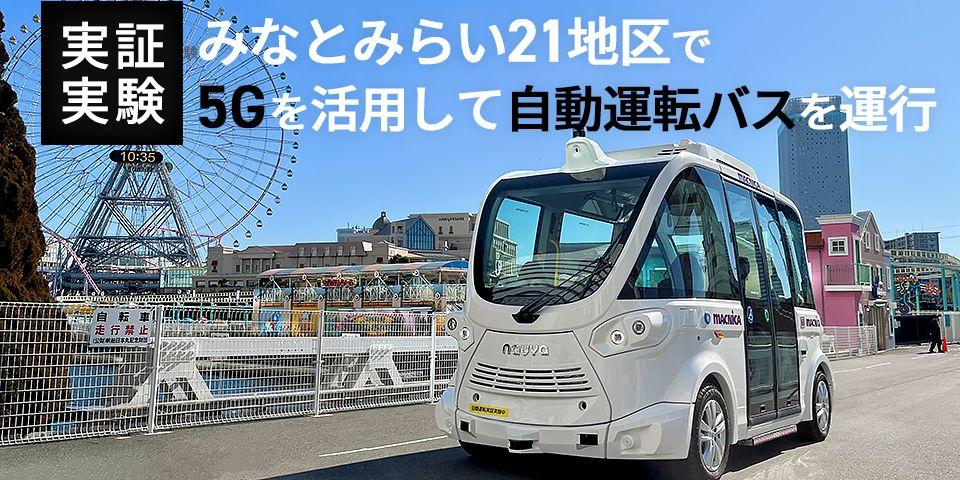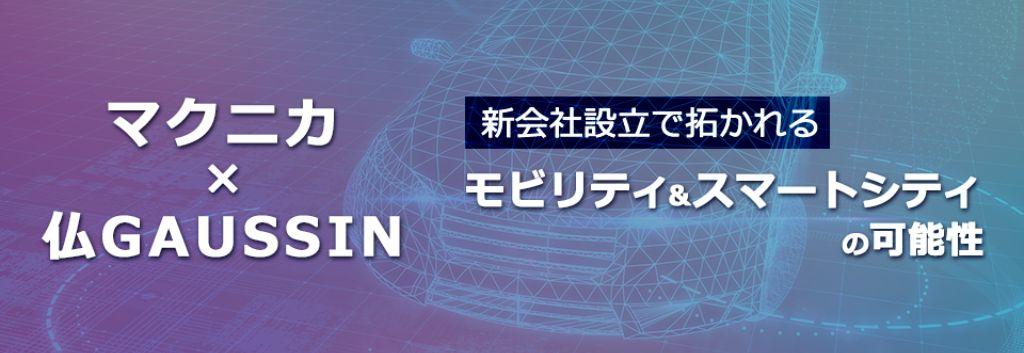
車両を人の手を介さずに走行させられる自動運転は、世界的に研究開発が進められている高度な技術のひとつです。また地域によっては、移動が困難な住民のライフラインになることが期待されるなど、社会課題を解決する手段でもあります。
マクニカでは「スマートシティ&モビリティ事業部」にて、自動運転や、それを活用した社会の発展を目指しています。そして、2023年4月にはフランスの企業であるGAUSSIN(ゴーサン)と手を結び、自動運転EVバスソリューションの提供を専門とするNAVYA(ナビヤ)の資産を引き継ぐとともに、フランスを拠点とする新会社、Gaussin Macnica Mobilityを設立しました。
今回は、マクニカで「スマートシティ&モビリティ事業部」の部長を務める福田 泰之(ふくた やすゆき)に、自動運転の概況や、GAUSSINおよびNAVYAとの取り組み、そして今後の展望などを語っていただきました。
自動運転、注目は集まるも本格実装はまだ先?
──まず、概況を教えてください。自動運転はなぜ、社会に必要とされているのですか?
福田:さまざまな理由がありますが、ひとつは移動手段の確保です。日本では高齢化社会にともなうバスのドライバー減少などで、公共の交通機関が少なくなっています。都市部ではまだその影響はあまり感じませんが、地方だとバスの本数が1時間に1本ということも珍しくありません。
また、昨今では免許保有者の高齢化を背景に、事故リスクを回避するために免許を返納する高齢者も増えており、移送手段の確保は喫緊の課題と認識しています。
そのため、将来的にドライバーがいなくても人々の移動を支えることのできる「自動運転」が必要とされています。
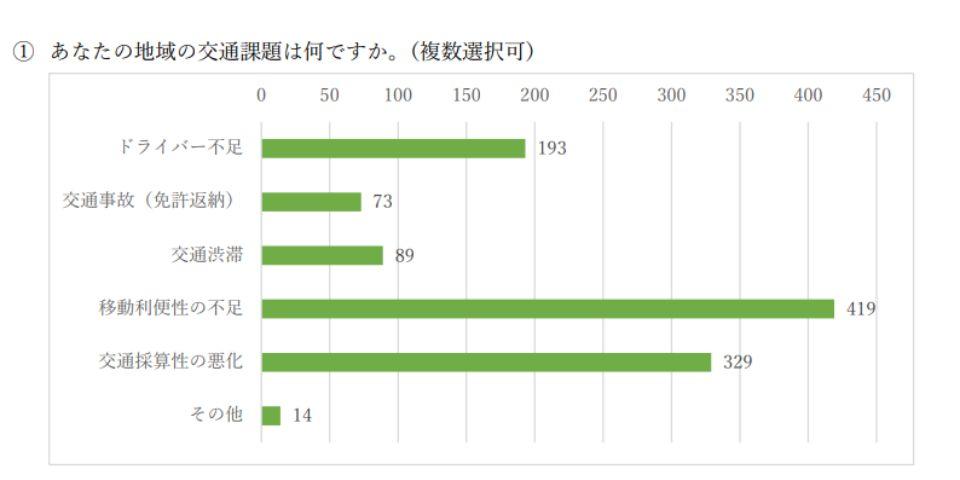
マクニカが2022年に日本全国の自治体を対象に行ったアンケート調査では、500を超える自治体から回答がありました。
「あなたの地域の交通課題は何ですか」という設問では、「移動利便性の不足」という回答が最多に。
また、自動運転には、移動に付加価値を与えられるという利点もあります。たとえば道路が渋滞している時間は、多くの人にとっては退屈で、生産性のないものだと言えます。そんなときに自動運転があれば、ドライバーは読書したり、スマホを見たり、会議をしたりと、時間を有効に使って、人生をより豊かなものにできると思います。
さらに、まちなかにおける自動運転バスのようなものであれば、単純に移動を支援するだけではなく、VR(仮想現実)などの新しい技術と組み合わせることで、利用者の体験価値を向上し、まちの魅力を上げることで、来訪者の増加などにも期待できると考えています。
──マクニカは2023年1月に、みなとみらいで自動運転を観光に活用する実証実験も行っていましたね。
福田:はい。この事例は、移動に付加価値を与えるための実証実験です。横浜みなとみらいのパーク内で、自動運転を移動手段としてだけでなく、移動中の車室内でスマートグラス越しに、風景と周囲の観光情報を同時に見られる観光体験としても提供しました。
──マクニカとしては公共の交通機関の現況を見つつ、移動の付加価値を高めることにも注力しているのですね。
福田:もちろん場所によってニーズが異なりますが、マクニカでは両方の取り組みを進めています。特に人口の少ない地域は、そもそも付加価値の提供の前に、移動手段の確保に対して、早急な対策が求められています。
──世界的に見た場合、自動運転の実装は順調に進んでいるのですか?
福田:まだ大きく進んでいないと思われます。そのなかでも進んでいるのは中国で、その次にアメリカ・ヨーロッパ・日本が並んでいる感じです。しかし、その中国でも自動運転が使われている場所はまだ限られています。
自動運転は、将来的にドライバーレスの運用を想定していますが、現状ではセーフティドライバーが同乗し、ヒトが介在するオペレーションがほとんどです。自動運転を実現するためには、事故を起こさないための安全確保が必要で、そのための法整備や実証実験を通じた課題検証を各国が進めているのが実態です。
NAVYA支援を介して手を結んだ、マクニカとGAUSSIN
──ここからは、マクニカのパートナーであるGAUSSINとNAVYAのことを中心に伺っていきます。まず、それぞれがどんな企業かを教えてください。
福田:GAUSSINは、大型の貨物を運搬する車両の開発・製造・販売・保守を行っている企業です。たとえば、数十トンもの重さがある貨物輸送コンテナを運ぶためのAGV(無人搬送車)など、空港や港湾で活躍する働くクルマを提供しています。巨大な倉庫を保有している、AmazonやUPS(※1)などが大手の顧客です。
※1:ユナイテッド・パーセル・サービス。アメリカ合衆国の貨物運送会社。
また、NAVYAは限られた場所、かつ短距離で人の輸送を行うための、自動運転車両向けのソフトウェア開発をメインに企業に行ってきた企業です。小型のバス車両も提供していますが、ソフトウェアの開発が主力です。
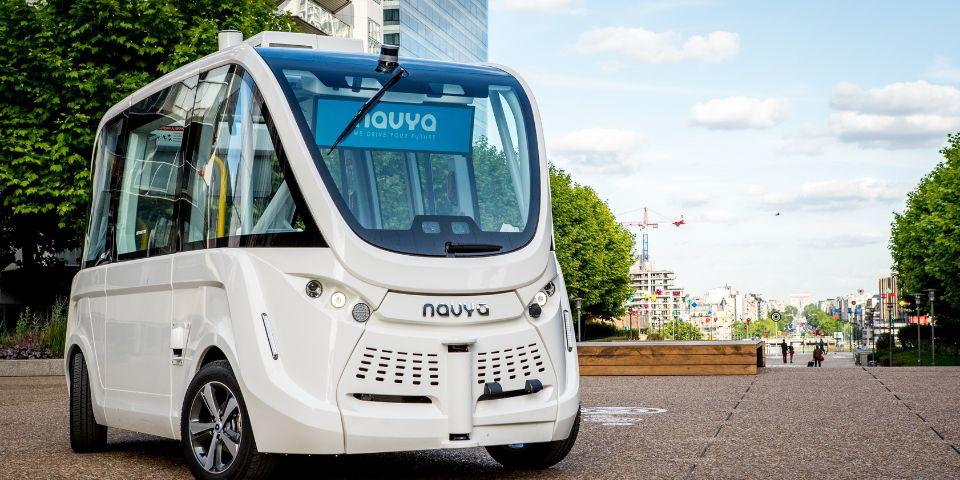
NAVYAが提供している小型バス「ARMA」
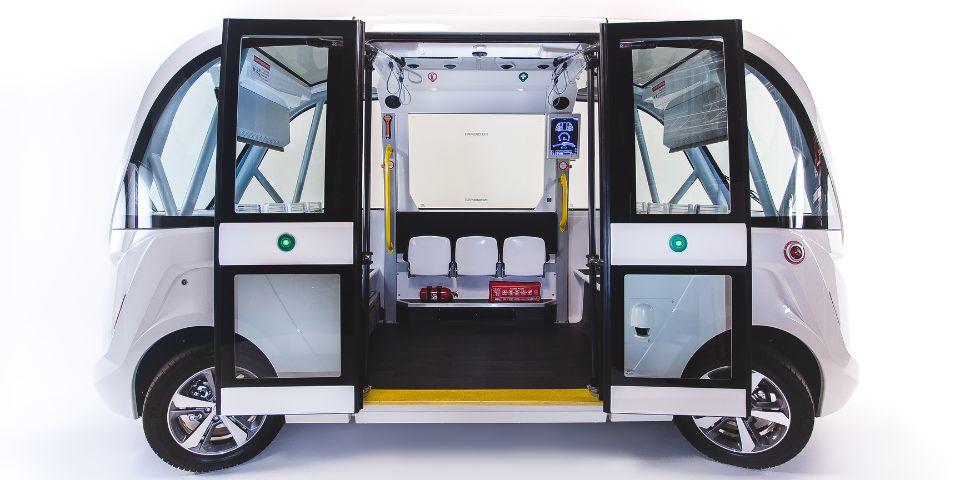
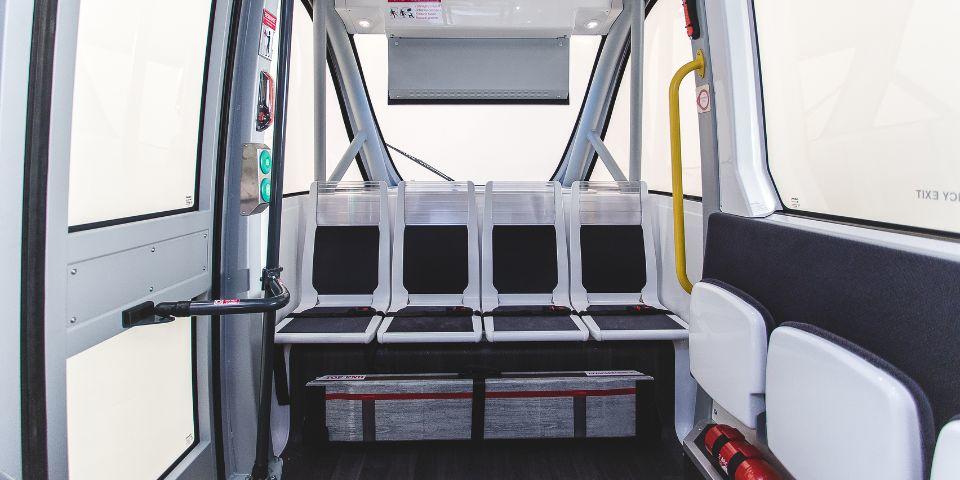
──マクニカはGAUSSINとGaussin Macnica Mobilityを設立し、NAVYAの資産を引き継ぎました。その経緯や目的はなんだったのですか?
福田:今後、世界中で必要になるであろう自動運転や、新しいモビリティサービスの提供を目標としたときに、優れた技術を有するパートナー企業が絶対に必要でした。また、グローバルで最もシェアが高かったNAVYA社の技術を活用して社会課題の解決に貢献することが、非常に重要だと考え、マクニカでは2019年より国内総代理店としてNAVYAの取り扱いを始めました。
しかし、世界的な猛威を振るった感染症の発生が人の移動を妨げるようになり、モビリティのスタートアップ企業はいずれも厳しい運営に直面していました。そして、マクニカではパートナーであるNAVYA社の事業を支援することにしました。
NAVYAはフランスの企業ということもあり、マクニカが1社で運営することは難しく、さらにNAVYA車両をご活用いただいているお客様に継続してサービスを提供するためには、代理店の継続だけでは不十分でした。そこで、マクニカは別の企業と手を組んでNAVYAの運営を支援することとし、その際に名乗りをあげてくれたのがGAUSSINでした。
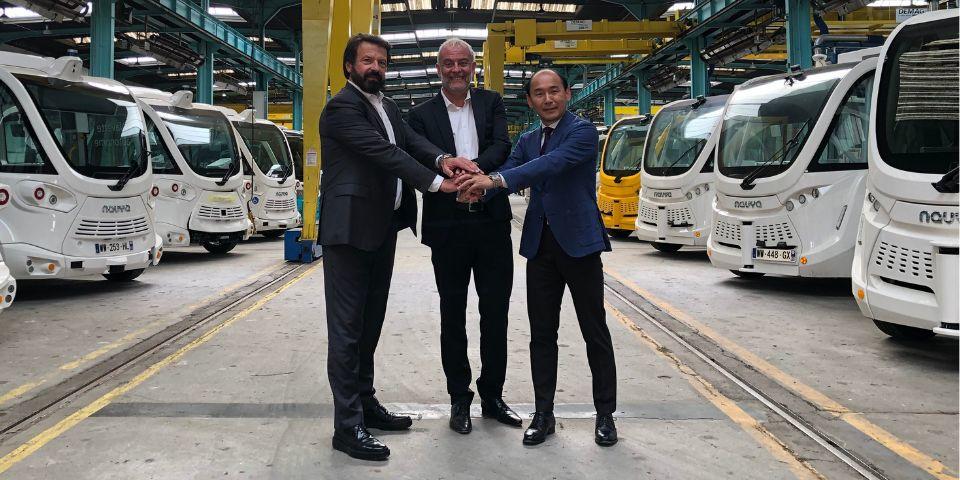
Christophe Gaussin氏 / CEO of Gaussin SA(写真左)、
Jean-Claude Bailly氏 / CEO of Gaussin Macnica Mobility(写真中)、
原 一将 / 株式会社マクニカ 代表取締役社長 Co-CEO(写真右)
GAUSSINの主な事業領域である貨物輸送の業界では、大手顧客からロボタイゼーション(自動化)の要求が強くなっているのですが、その実現には技術的な課題がまだ多い状況です。また自動運転は現場でしっかりと走れるように実装作業や運用オペレーションが必要ですが、その過程で起こるさまざまな問題を、いち早く解決に導く万全のサポートも欠かせません。
NAVYAは、その点にすごく強みをもっています。そのためGAUSSINはNAVYAのもつ自動運転技術と実装ノウハウを獲得し、空港や港湾などの私有地と、公道の両方にソリューションを提供できるビジネスシナジーを創出するため、NAVYAへの支援を決めたそうです。
一方でマクニカはNAVYAへの支援パートナーとして、自社とのシナジーを重要視してましたが、GAUSSINはそこにぴったり当てはまりました。
──マクニカとGAUSSINには、どんなシナジーがあると考えていますか?
福田:それぞれ、ソリューションや自動運転車両の開発・提供などにおけるラインナップが増える点が大きいと思います。
マクニカはGAUSSINが得意とする空港や港湾などを、逆にGAUSSINはマクニカやNAVYAが得意としている公道を開拓できるようになります。GAUSSINはこれまでヨーロッパでの活動が中心でしたが、たとえば日本やアジアで貨物運搬をやるようになれば、ビジネスの機会も大幅に増えると思います。
また、多くの貨物運搬車両を一度に制御するには管理システムが必要になりますが、マクニカが協業しているアプトポッド社のシステムを組み込んでもらうといったこともできますね。
──具体的に進んでいる取り組みはありますか?
福田:まずマクニカとGAUSSINの観点で言うと、GAUSSINの開発している製品に関する市場調査を開始しており、GAUSSINソリューションの自動化に向けたプロジェクトが始まったりしています。
一方でフランスに設立したGaussin Macnica Mobilityでは、大きく分けて3つの取り組みを進めています。
1つ目は、NAVYAが提供していた自動運転車両「ARMA」や「EVO」の普及を続けること。
2つ目は、空港や港湾などで利用されている、大小のトラクターをはじめとした運搬車両の自動化。小型のトラクター自動化は、もともとNAVYAが取り組んでいたことです。
3つ目は、6mバスを活用したレベル4の自動運転のプラットフォーム開発です。
MaaSからスマートシティへの発展を目指す
──今後の展望を教えてください。
福田:まず、公道で走れるNAVYAの製品を拡大するために、自動運転を実装したい自治体と実装する車両の台数を増やすことが目標です。さらに2025年くらいまでに新しいプラットフォームが登場予定なので、それに向けて実装数を増やし、数年後にまた置き換えるというサイクルを作ることで、どの場所でもレベル4の自動運転を実現可能にすることです。
ただし、自動運転の実装を増やすことだけが私たちの使命ではありません。確かにそれが実現すれば世の中は便利になりますが、これからは新しいモビリティでサービスを作り、それを他の交通サービスとつなげることが重要だと思っています。いわゆる「MaaS(※2)」ですね。
※2:Mobility as a Service。電車・バス・タクシーなどのあらゆる交通機関をITを活用し、効率よく使えるようにするシステム。
いまは医療・ヘルスケア・農業など、さまざまな分野でのDXが進んでいます。ここにMaaSが加わり、他の産業とデータをつないで新たなサービスが創出され、利便性が高まることで、私たちの暮らしを豊かにするスマートシティが実現します。
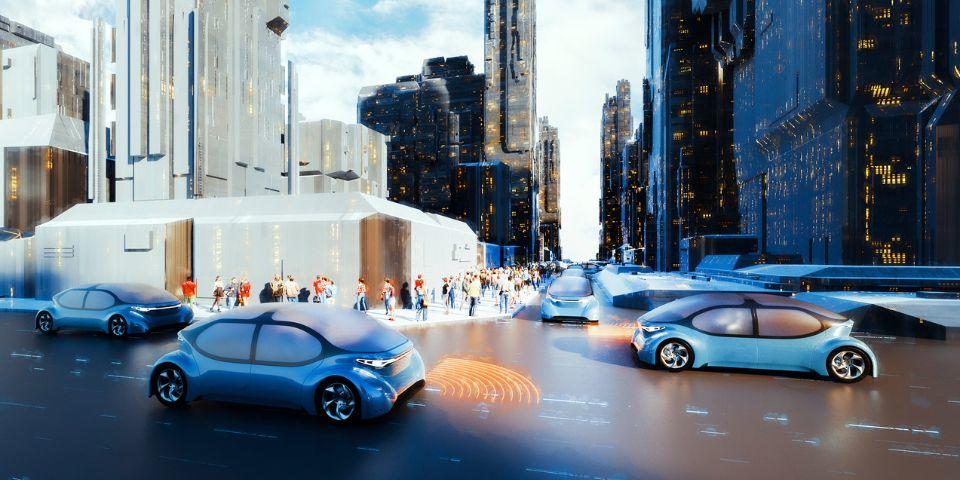
また、昨今ではエネルギーにも注目が集まっています。代表的なものは、ガソリンから電気への切り替えです。そしてEV(電気自動車)が主流になると、今度は充電をする場所や、消費電力を再生可能エネルギーでまかなう仕組みが必要なので、そういったものを導入する過程でもEV化したモビリティが必要であり、親和性の高いものであると認識しています。
一方で、企業に対しての考えもあります。たとえば製造業では工場の全自動化が進んでいますが、そこにGAUSSINの大型車両や、指定の時刻と場所に貨物をもっとも効率的に運べるNAVYAのシステムを導入したりすることで、業務効率化ができます。アジア諸国だけでもスマートシティを含め、ビジネスチャンスが広くあるはずです。
──自動運転の進み具合はアメリカ・ヨーロッパ・日本がほぼ同列というお話もありましたが、改めて、まだまだこれからというところでしょうか?
福田:そうですね。たとえば、いまは信号機での右折ひとつをとっても、自動運転の対応はまだまだ完璧ではありません。私たちが自分で運転するときは、「人が飛び出してくるかもしれない」などと予測しながら走っているので、予想外の事態にもある程度対応はできます。しかし、自動運転だとそうはいかないので、そこは課題だと思っています。
車両のあらゆるところにカメラを設置して、360度見られるようにしたり、AIをフル稼働させたりすれば、事故は軽減できるかもしれません。ですが、そうすると必要な部品が多くなったり、消費電力が膨大になって、少し走っただけでバッテリー切れになったりと、物理的な問題が生じてしまいます。これも難しい問題ですね。
最近では車体にスマートポール(※3)を付けて、「人が来る」という情報を車両にインプットするなど、各国が法整備も含めたさまざまな対応を試行錯誤しながら進めています。
※3:5Gアンテナや高速Wi-Fiによる通信、人流計測カメラや環境センサーによる都市環境の見える化といった機能を備えた、次世代都市インフラ(参考:東京都デジタルサービス局)。
──国が違えば、文化や交通ルールも違いますからね。
福田:その通りです。だからものすごく複雑ではあるんですけど、それでも実装は少しずつ進んでいます。日本でも自動運転のレベル4が解禁になって、需要が高まっていると思いますし、実際にお客様からの問い合わせも増えてきています。
自動運転やスマートシティの幅広い実現には非常に高いハードルがありますが、GAUSSINやNAVYAのもつ強みも活かしながら、挑戦を続けていきたいです。
まとめ
自動運転はその高度さゆえに実装が難しく、私たちが身近に利用できるのは当分先のことになりそうです。しかし、ドライバー不足などの社会課題解決のために求められていることは明らかであり、多くの期待が寄せられています。
マクニカは、優れた技術力や開発力などをもつパートナー、GAUSSINとNAVYAの協力を得ながら、今後もモビリティ&スマートシティ事業部を中心に、暮らしやすい社会の実現を目指してまいります。
お問い合わせ
本記事の内容に関して、ご質問やご不明点などございましたら、以下よりお気軽にお問い合わせ下さい。

